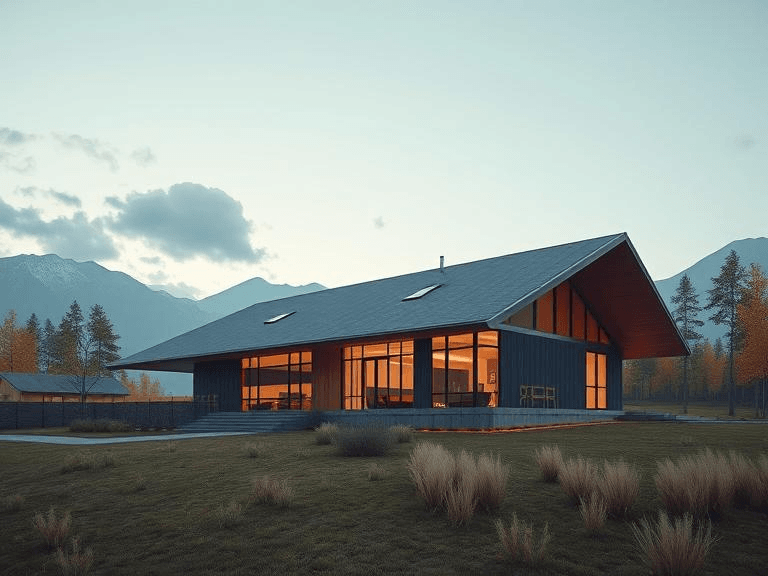
Assessing your roofing needs is a fundamental step in ensuring a successful roofing project. The first aspect to consider is the current condition of your roof. Inspecting for signs of damage such as leaks, missing shingles, or sagging areas can provide valuable insight into whether repairs or a full replacement is necessary. A roofing contractor can also conduct a thorough inspection, offering a professional assessment of any structural issues that may not be immediately visible.
Next, it is critical to identify specific roofing issues that may need attention. This could include age-related wear and tear, weather damage from storms or hail, or problems related to poor ventilation. Understanding these issues enables homeowners to prioritize their needs effectively. For instance, if the roof is nearing the end of its lifespan but is otherwise in good condition, it may make more sense to invest in a complete overhaul rather than continual patchwork repairs.
Beyond assessing the physical condition of the roof, homeowners should consider the purpose of any replacement or repair. Questions such as how long one plans to stay in their current home can influence this decision. If the intention is to stay long-term, it may be worthwhile to invest in high-quality materials that will offer durability and aesthetic appeal. Additionally, climate factors should be examined, as different materials respond uniquely to various weather conditions. Finally, the style of the home must also be considered to ensure that any new roofing complements its architecture. By thoughtfully evaluating these factors, homeowners can take essential steps for a successful roofing project that meets their needs effectively.
Choosing the Right Roofing Material
In the selection process of roofing materials, one must consider various options available in the market, including asphalt shingles, metal roofing, and tiles. Each of these materials comes with its own set of advantages and disadvantages, thereby making the decision a crucial part of the essential steps for a successful roofing project.
Asphalt shingles are one of the most commonly used roofing materials due to their affordability and ease of installation. They offer a decent lifespan of around 20 to 30 years and are available in a wide range of colors, enhancing the aesthetic appeal of a home. However, they may not perform well in extreme weather conditions, such as heavy winds or intense heat, leading to potential damage over time.
Metal roofing is gaining popularity as a durable and long-lasting option. With a lifespan that can exceed 50 years, metal roofs are resilient against harsh weather and provide excellent insulation. They are also energy-efficient and can help reduce cooling costs. On the downside, the initial cost of metal roofing is generally higher than asphalt shingles, and certain metal roofs may be prone to denting.
Tile roofing, made from materials such as clay or concrete, provides a distinctive look that is particularly popular in regions with hot climates. Tile roofs can last for over 50 years and have natural resistance to fire and pests. Nonetheless, they are heavier than other roofing options, which may require additional structural support, and their cost is typically on the higher end of the spectrum.
In addition to the type of material chosen, it is essential to consider local weather conditions and building codes, as these factors significantly influence the longevity and performance of the roofing system. By carefully evaluating the pros and cons of each material, homeowners can ensure that their choice aligns with the essential steps for a successful roofing project.
Budgeting for Your Roofing Project
When embarking on a roofing project, effective budgeting is a crucial component that can determine the overall success. The first step in this process is to create a comprehensive budget that includes all potential expenses. Begin by estimating the cost of materials, which can vary widely based on factors such as the type of roofing material selected, the size of the roof, and any special features that may be required. Research various materials, ranging from asphalt shingles to metal roofing, and review their costs to make an informed decision.
Next, factor in labor costs. Hiring a reputable roofing contractor typically involves labor expenses that should be clearly understood prior to project commencement. Additionally, do not overlook permits, which may be necessary depending on your jurisdiction. These formal requirements often entail fees that should be included in your budget to avoid unexpected financial strain.
While creating your budget, it is prudent to account for potential hidden costs that may arise during the project. These may include unexpected repairs to the roof’s underlying structures, costs related to removal of old roofing, or weather-related delays. It is advised to allocate a contingency fund—typically around 10% to 15% of your total budget—to cover these unforeseen expenses. Prioritizing spending is also essential; focus first on the most critical aspects of your roofing project before addressing cosmetic upgrades or enhancements.
Lastly, consider financing options to manage the financial burden of your roofing project. Home improvement loans, personal loans, or even insurance claims can provide necessary funds. Evaluate your financial options carefully to ensure that your project remains within budget while meeting your roofing needs. By taking these essential steps for a successful roofing project into account, you will be better positioned to manage your finances effectively and achieve your project goals.
Finding Qualified Roofing Contractors
Choosing the right roofing contractor is an integral part of ensuring the success of any roofing project. The process begins with conducting thorough research to identify qualified roofing professionals in your area. Start by asking for recommendations from friends, family, or neighbors who have recently completed roofing work. Their personal experiences can provide valuable insights and lead you toward reputable contractors.
Checking credentials is a critical step in the selection process. Reputable roofing contractors should possess the necessary licenses and insurance to operate legally and safely. This includes workers’ compensation coverage, which protects you from liability in the event of accidents on your property. Verify these credentials by requesting documentation and contacting relevant authorities if necessary.
Reading online reviews and testimonials can also help gauge the reliability of potential roofing contractors. Websites such as Google, Yelp, or Angie’s List offer a platform for former clients to share their experiences. Pay attention to both positive and negative feedback to understand the contractor’s work quality and customer service. Moreover, look for patterns in the reviews; consistent praise or criticism can signal the contractor’s overall standards.
Once you have a shortlist of potential contractors, seek multiple quotes to compare pricing. During this stage, it is essential to ask for a detailed breakdown of the costs involved, as well as the timeline for project completion. Do not hesitate to ask questions that cover aspects such as materials, warranty options, and potential delays to ensure transparency. Each interaction with a contractor can provide insight into their professionalism and approach to customer service, helping you make a more informed choice.
By diligently following these essential steps for a successful roofing project, you can ensure that the contractor you select is qualified, reliable, and capable of delivering high-quality work. This careful consideration ultimately results in a roofing project that meets your expectations and enhances the value of your property.

Understanding the Roofing Process
The roofing process is a critical sequence of activities that requires careful planning and execution to ensure a successful outcome. It typically begins with an initial inspection, where a professional roofer assesses the existing condition of the roof. This evaluation helps identify any underlying issues, such as structural damage or leaks, which must be addressed before the main work can begin. The inspector will also provide valuable recommendations regarding the best materials suited for the specific climate and architectural style.
Following the inspection, the next step is the delivery of materials. Proper logistics play an essential role here, as the materials must be delivered in a timely manner to avoid delays. During this phase, it is crucial to ensure that all necessary supplies, such as shingles, underlayment, and flashing, are available on-site. Coordination between the supplier and the roofing contractor can significantly enhance the overall efficiency of the project.
The actual installation phase is where the bulk of the work occurs. Depending on the size and complexity of the roofing project, this process can take anywhere from a few days to several weeks. Experienced roofers will meticulously remove the old roofing material, make necessary repairs to the substrate, and then install the new roofing system according to manufacturer’s specifications. This adherence to standards is vital in ensuring the longevity and durability of the completed roof.
Once the installation is complete, a final inspection is conducted to ensure everything meets the required standards of quality and safety. During this stage, the contractor will evaluate the installation for any potential issues and provide guidance on care and maintenance for the new roof. By understanding the roofing process and being aware of these essential steps for a successful roofing project, homeowners can contribute to a smooth and efficient experience.
Inspecting the Work
After completing a roofing project, it is crucial to conduct a thorough inspection of the work done. This step ensures that any potential issues are identified early and that the roofing structure meets quality and safety standards. One of the primary areas to check is the alignment and uniformity of the shingles. Proper shingle alignment not only enhances the aesthetic appeal of the roof but also significantly contributes to its durability and effectiveness in shedding water.
Next, the functionality of flashing is another essential aspect to scrutinize. Flashing should be securely installed around chimneys, vents, and skylights, preventing any water ingress that could lead to leaks. Inspect the valleys as well, where two roof slopes meet, ensuring that they are clean and free from debris that could obstruct water flow. Additionally, checking for any loose or missing shingles is vital, as these can compromise the roof’s integrity and lead to more significant issues down the line.
In the event that any deficiencies or suspect workmanship are detected during your inspection, it may be necessary to consult a professional roofing expert. These specialists have the training and experience to identify problems that a layperson may overlook, such as improper underlayment installation or inadequate ventilation, which could greatly affect the roof’s lifespan.
Understanding the details of your roofing warranty is also essential. Warranties can cover materials and workmanship, yet they often have stipulations that must be met to ensure coverage. Knowing what to look for in your roofing warranty can save you from unexpected costs related to repairs. Ensuring that these essential steps for a successful roofing project are observed during the inspection phase will ultimately lead to a better-performing roof.
Maintaining Your New Roof
Proper maintenance of a newly installed roof is crucial to ensure its longevity and prevent costly repairs. One of the essential steps for a successful roofing project is establishing a routine maintenance schedule immediately after installation. This not only helps in retaining the roof’s integrity but also contributes to overall home safety.
Regular inspections should be conducted at least twice a year. During these audits, homeowners should examine the roof for any visible damage, such as missing shingles or signs of wear. It is advisable to inspect after major storms as well, as severe weather can lead to unexpected damages that may not be easily visible. Taking the time to notice these issues early can significantly prolong the lifespan of the roof.
Another fundamental aspect of roof maintenance is the cleaning of gutters and downspouts. Clogged gutters can lead to water buildup, resulting in leaks and damage to both the roof and the structure of the house. It’s essential to clear leaves, twigs, and other debris from gutters regularly, particularly during the fall when foliage is abundant. This simple task prevents water from pooling and causing unnecessary stress on the roofing materials.
Additionally, removing debris from the roof surface itself should not be overlooked. Branches, leaves, and dirt can accumulate and create an environment conducive to mold or rot, thus impairing the roofing material. Homeowners should take care to remove any substantial debris gently, using appropriate tools to avoid damaging the roofing system.
Finally, scheduling professional inspections at least once every few years is a smart investment. Licensed roofing contractors can identify potential problems that homeowners might overlook and provide solutions that ensure the roof remains in optimal condition. Adhering to these maintenance practices is pivotal in achieving the long-term success of your roofing project.
Planning for Future Repairs or Upgrades
In any roofing project, one of the essential steps for a successful roofing project is to proactively plan for potential future repairs or upgrades. A well-thought-out plan can greatly minimize unexpected expenses and extend the life of the roofing system. The first consideration is to establish a budget that accommodates not only the initial installation costs but also future maintenance needs. This involves analyzing the average lifespan of various roofing materials and taking into account the local climate, which can significantly affect wear and tear.
It is also crucial to maintain detailed records regarding all maintenance activities. Keeping a maintenance log allows homeowners to track inspections, repairs, and any new upgrades that have been made over time. This documentation will prove invaluable when determining the overall health of the roof and identifying any recurring issues that may need special attention. Furthermore, consistent maintenance is often more cost-effective than waiting for a severe problem to arise. Regular assessments can extend the life of the roofing system and help identify issues early on, making repairs simpler and less expensive.
Another significant aspect is discussing your long-term plans with contractors at the time of the roofing installation. This discussion should include potential future renovations and how they may impact the roofing system. For example, if you plan to add an attic or construct a larger structure in the future, the current roofing design may need to be compatible with those enhancements. By fostering open communication with contractors, you can make informed decisions, ensuring that your roofing project aligns both with immediate needs and anticipated future developments. Implementing these proactive strategies can clearly enhance the prospects for a successful roofing project.
The Importance of Permits and Local Regulations
When embarking on a roofing project, understanding the significance of permits and local regulations is paramount. Homeowners often overlook the necessity of obtaining the appropriate permits, but these legal documents are critical in ensuring that any roofing work conducted is compliant with local building codes and regulations. A roofing project can encompass various types of work, including installation, repair, or replacement, and each may require different permits depending on the jurisdiction.
Typically, building permits are required for major renovations, structural modifications, and new roofing installations. The process for obtaining permits usually involves submitting an application to the local government or building department, which may require detailed plans and specifications of the intended work. This can include information about materials, dimensions, and proposed timelines. Engaging with local authorities early in the project can help identify the specific permits needed, as regulations can vary significantly between regions.
Ensuring compliance with local regulations is not just a matter of legal obligation; it plays a vital role in guaranteeing the safety and quality of the roofing project. Non-compliance can lead to severe consequences, including fines, complications when selling the property, or even the requirement to redo work that has not met the legal standards. Furthermore, obtaining the necessary documentation helps to ensure that the project adheres to local safety codes, thereby protecting both the occupants of the building and the contractors involved.
Ultimately, the essential steps for a successful roofing project begin with understanding and adhering to local regulations and procuring the necessary permits. By prioritizing these legal aspects, homeowners can avoid future legal complications and ensure that their roofing projects meet all required standards.


